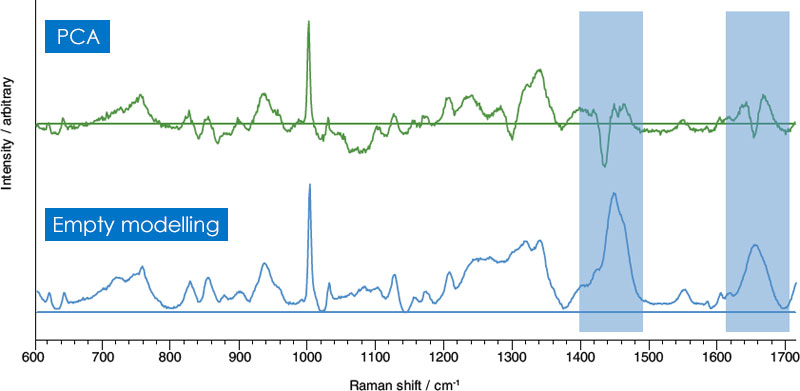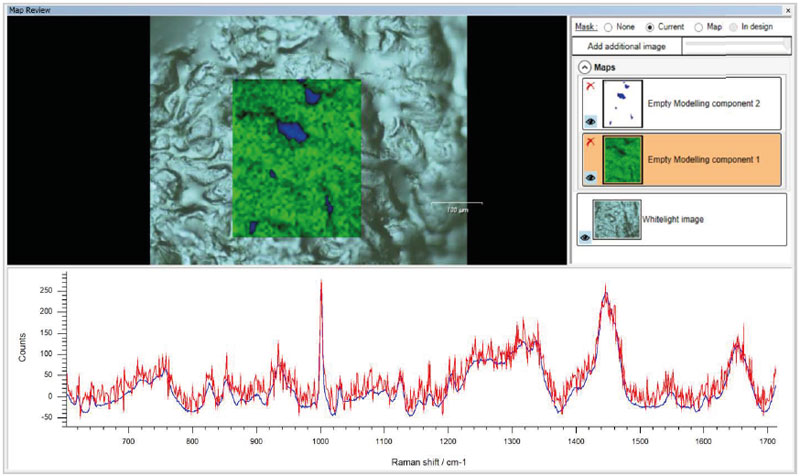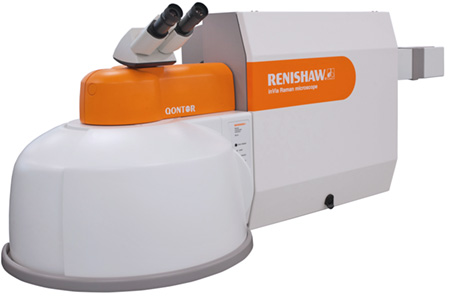Empty Modelling in Raman Analysis
Empty modelling is a method in Raman analysis for identifying components and unknown materials from complex mixtures, even without prior knowledge of the species present.
Blue Scientific is the official Nordic distributor for Renishaw Raman instruments in Norway, Sweden, Denmark, Finland and Iceland. For more information or quotes, please get in touch.
Renishaw Raman instruments
More articles about Raman
Contact us on +44 (0)1223 422 269 or info@blue-scientific.com
Empty Modelling
Empty modelling extracts pure, identifiable component spectra from complex mixtures and large Raman datasets. It doesn’t require any prior knowledge of the components.
In seconds, empty modelling identifies the chemical species present from millions of spectra. Chemical images are also generated to visualise their distribution. This is possible even if the individual spectra represent mixed components.
The method is based on multivariate analysis using the whole spectrum, not just a single Raman band. This delivers accurate results that can then be directly related to chemical properties.
Empty modelling doesn’t require a list of suspected components or any guidance. The dataset is analysed objectively by the software, yielding clear results.
This is available in Renishaw’s WiRE control and analysis software, using patented algorithms.
Principle Component Analysis (PCA)
The traditional method for analysing complex datasets when reference spectra aren’t available is Principle Component Analysis. PCA examines variance in the data and extracts components or ‘loadings’ based on their significance. These abstract loadings can be difficult to interpret.
As you can see in the example below of protein component spectra, PCA results are an abstract mathematical representation of the data with negative peaks. The empty modelling results resemble regular Raman spectra, making them much easier to work with and interpret.

How Empty Modelling Works
Empty Modelling is a fully unsupervised version of multivariate curve resolution alternating least squares (MCR-ALS). The spectrum is broken down into its the key components, optimising the fit with each pass. In contrast to PCA, each loading’s concentration and features are constrained as positive, so the results look like a normal Raman spectrum.
In just a few steps, key chemical components can be identified quickly and easily from complex non-homogeneous Raman mapping data.
Empty modelling works iteratively; the spectra are improved as each component is extracted from the data. This ensures an optimum match to the chemistry of the sample. The procedure can be stopped once a pre-defined percentage of variance is met, or when a target number of components has been determined.

Straightforward Results
Results are displayed in a straightforward interface showing the components of the sample. The distribution of each component can be displayed, together with its spectrum. You can also compare single map spectra with the component spectrum by clicking on points on the map.
Components can then be identified by searching a a wide selection of spectral libraries, using Renishaw’s Spectrum Search module. The spectra relate directly to real Raman spectra, so it’s easier to identify components and unknown materials than with traditional unsupervised analysis techniques.

Renishaw Raman
Empty modelling and Spectrum Search are part of Renishaw’s WiRE (Windows-based Raman Environment) software for Raman data acquisition, processing and analysis:
- Identify an unknown spectra
- Remove background interference.
- Determine the distribution of particles in megapixel-sized Raman images.
- … and more!
More Information
Blue Scientific is the official distributor of Renishaw Raman in the Nordic region. Our team is based regionally throughout Scandinavia and remote demos are available. We’re here to provide quotes and to answer all your questions – just get in touch:


